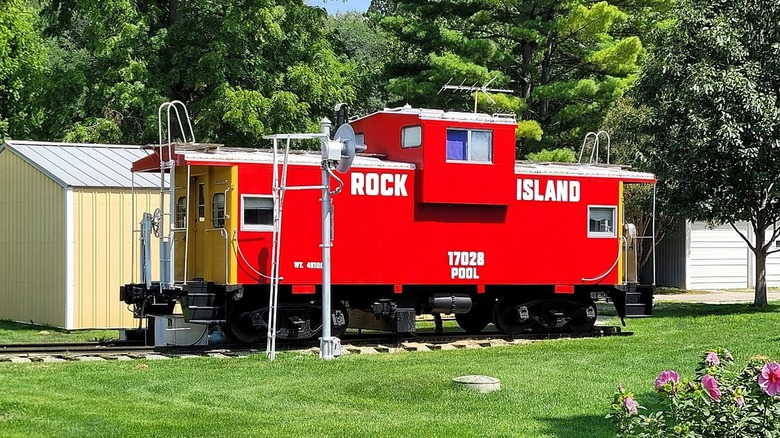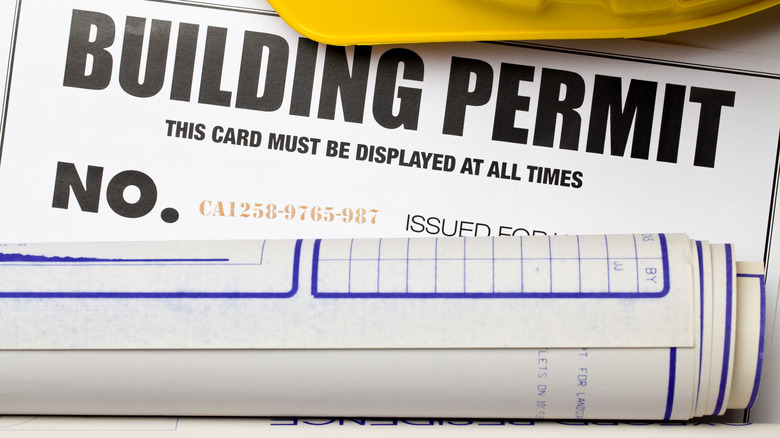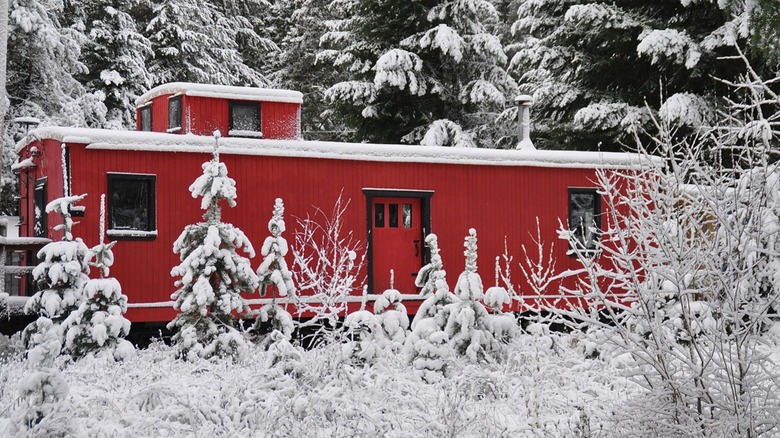Old Train Cars Are Your Golden Ticket To Tiny Home Living
Oh, to inhabit a space resonating with "The Boxcar Children" vibes. Since the "tiny-house movement" started inspiring people to downsize their belongings, utility bills, and carbon footprint and give up on the high-borne consumerism culture, there has been a spate of ideas for teeny dwellings. Instagram's and TikTok's algorithms are fueling the demand by pushing charming tiny house rentals, B&Bs, or hotels at their doom-scrolling users.
Measuring no more than 400 square feet, barring lofts that add another minimum area of 35 square feet (per the standing IRC code), tiny homes are being built on wheels (converted RVs), by upcycling shipping containers, or through prefab tiny house kits. However, another unconventional idea that's been gaining traction and tempting rail aficionados is transforming old train cars into their sweet homes.
Although not a novel idea — a New Jersey resident refurbished a wooden caboose she bought in 1975 from a vacation home into a full-time home — things began moving when the North American railroads started retiring their vintage railcars for good, putting them on the market as goods or scrap. That got some creatives thinking that parlor cars, boxcars, or even cabooses could make comfortable homes. After all, the hardy exterior and a nifty floor plan were already in place. Not to mention, they do make for a unique, cost- and eco-conscious dwelling. However, there are quite a few financial facts to consider before buying a tiny house carved out of timeworn rail cars.
What goes into shaping tiny homes out of emeritus rail cars?
Before weaving dreams of looking through vestibule windows at a breathtaking landscape, take some time out and read through your local zoning laws and building codes. That's because most U.S. states and counties have yet to walk the mile necessary to give life to tiny homes. They either ban them in suburban yards, ordain minimum dimensions, require utility connections to the city, or mention copious other requirements, including obtaining occupancy certificates and permits. But if you've got the green light, move on to sourcing an appropriate wagon car and having it reach your property within a reasonable budget.
Generally, retired rail cars are sold in varying dimensions. For instance, a caboose can measure anywhere between 30 feet and 50 feet in length while topping out at under 14 feet (based on its cupola's size), which can feel short to some. Moreover, your choices are naturally limited by the local code and what's commercially available in local scrapyards, market listings on Craigslist and FB marketplace, or relatively expensive offerings on websites like Ozark Mountain Rail Car, Cabooses4Sale, and Rail Merchants. Overall, though, you can expect to snag a steel piece for about $2,000 to $4,000 (via The Tiny Life) with wooden counterparts for cheaper.
Moving the retired rail car to your property is a tall task
Belying expectations, the hardest piece to fit in your distinctive tiny home puzzle isn't finding a decent rail wagon, but accessing it. Excluding the still serviceable caboose cabins, vintage rail wagons aren't mobile, meaning they must be shipped (or transported through highways) to your property and secured to a foundation. Sometimes such costs can be highly prohibitive (upwards of $20,000), not only because of the distance but also for the countless clearances (utility poles, bridges, fences, and the like) necessary to make the journey. Not to mention they weigh around 10 tons, per Strasburg Rail Road, so moving it is no easy (or cheap) feat.
But if you're still game, factor in the installation costs, such as paying crane operators and laying down railway tracks (if you wish to maintain the aesthetic) or imitable gravel paths. After you've cleaned up the murky interiors, fixed up the window panes, and arranged the utility connections, you can finally commence thinking about decorating your tiny house like a pro. Don't forget, installing new insulation is extremely crucial, as rail cars can get extremely cold or leaky (from a downpour), in addition to being a tad noisy. All in all, the total expenses can set you back between $20,000 and $60,000, according to The Tiny Life, not factoring in the sundry accouterments.


